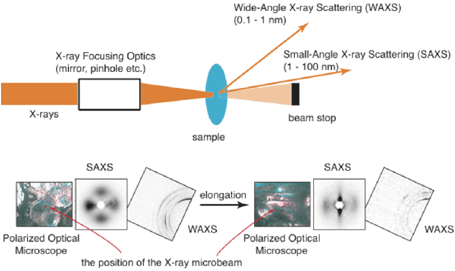Web Release Date: October 23, 2007
M.
[Full Text PDF(J-STAGE)]
| Strain-induced crystallization (SIC) of natural rubber (NR) has been extensively studied even before the advent of macromolecular physics. However, there are still some unsolved basic issues in this field. In this review article, classic studies on SIC of NR are briefly introduced, and then recent synchrotron X-ray diffraction studies are summarized and some unsolved issues are discussed. The experimental results in separate papers by different authors were categorized and interpreted on the basis of the molecular models. |
 |


















